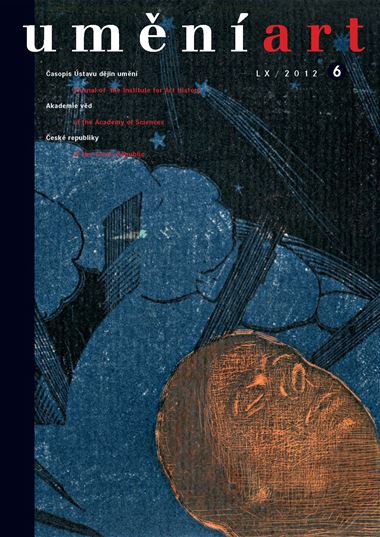Petr Wittlich
Pod velkým stromem. Pařížský pobyt sochaře Bohumila Kafky v letech 1904–1908
Sculptor Bohumil Kafka (1878–1942) represents the case of an artist who in his youth embraced the Secessionist ideals of modernism and later gravitated towards a traditional academic career as a professor at the Academy of Fine Art in Prague. The study looks mainly at the four-year period Kafka spent in Paris in 1904–1908, which culminated in a solo exhibition at the gallery owned by A. A. Hébrard’s foundry business in May 1906. An encouraging foreword to the exhibition catalogue was written by novelist Camille Mauclair, who at the time had ties to the Mánes Union of Fine Arts in Prague, of which Kafka was an active member. In Paris, Kafka looked for photographs of works by French artists to publish in the Union’s magazine Free Currents (Volné směry) and this brought him into personal contact with a number of interesting figures, such as Maillol and Bourdelle. These social successes also of course shaped the sculptor’s artistic outlook. Kafka had originally been strongly influenced by August Rodin’s exhibition in Prague in 1902, and that same year he visited Rodin’s atelier in Paris. In 1906 Rodin invited him to Meudon and in a letter Kafka wrote that ‘I’ve never had a more beautiful holiday in my life and probably never will’. Through Hébrard, whose company did the lost-wax casting of his sculptures, he became acquainted with the works of Rembrandt Bugatti and tried to equal him with his own work in the Jardin des Plantes. He also admired Bartholomée, and transformed his motif of outstretched arms into the funerary Embrace of Love and Death. Kafka was at his most productive in 1905, when he created The Mummy, Madness, The Sleepwalker, all of which provide evidence of his updated form of symbolism, but also of the Impressionistic themes that inspired him during his stay at a spa in Onival. These works were also the ones most praised by Mauclair, because they corresponded to his notion of ‘national classicism’, with which he wanted to address the difficult problem of what to do after Rodin. Kafka was taken by his interpretation and embarked on the path of a ‘return to order’ carved out by Maillol and Bourdelle. The intuitive Kafka thus abandoned the sublime idea of negative, concave volume, a feature of his previous, expressionist work, in favour of a new ‘classical mania’.
Full-text in the Digital Library of the Czech Academy of Sciences:
https://kramerius.lib.cas.cz/uuid/uuid:f24643b6-86fd-d14c-0c04-621aaa1dc7e2
< back

